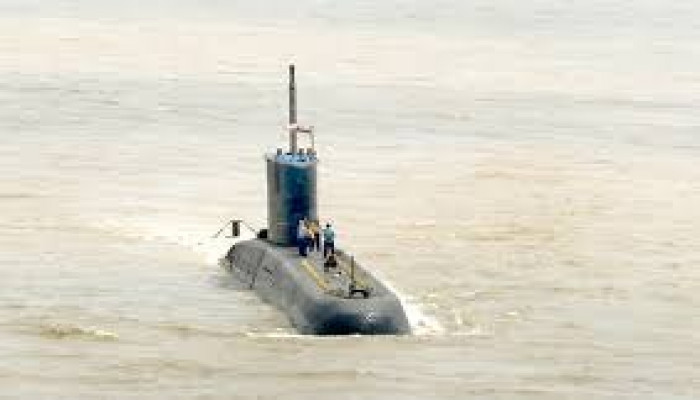In a first, CSIO refurbishes Navy submarine periscope indigenously
- In Reports
- 07:53 PM, Jul 12, 2023
- Myind Staff
According to reports, the Central Scientific Instruments Organisation (CSIO) in Chandigarh, nestled in the foothills of the Himalayas, has successfully executed a groundbreaking project, breathing new life into a critical naval system. For the first time, the periscopes on the Navy's attack submarines have been repaired and refurbished indigenously, a significant achievement in naval technology.
Periscopes play a vital role in submarine operations, serving as complex electro-optical devices that enable the crew to visually survey the surrounding sea surface while the submarine remains submerged just below. This functionality minimizes the risk of detection and enhances the submarine's stealth capabilities. Submarines are equipped with various types of periscopes, which can be raised or retracted as required, allowing for versatile observation and surveillance capabilities.
The successful repair and refurbishment of the Navy's periscopes by CSIO in Chandigarh highlight the organization's technological expertise and marks a significant step forward in indigenous naval development. This achievement demonstrates the growing capability of Indian institutions in executing critical defense projects and underscores the nation's commitment to self-reliance in advanced military technologies.
“The project took us about one-and-a half years to carry out and the refurbished periscope is, at present, undergoing trials onboard the submarine,” CSIO Director Prof SA Ramakrishna said. “The work involved studying and analysing a large number of optical elements and associated components and then developing the methodology and technology to meet the Navy’s requirement,” he added.
The Indian Navy's 16 operational attack submarines are currently sourced from foreign origins. However, efforts have been underway for several years to overhaul and refurbish periscopes within the country. As part of this initiative, the Navy approached the Central Scientific Instruments Organisation (CSIO) for assistance. CSIO, which has been involved in various defense-related projects, including optics, took on the task of repairing and refurbishing periscopes.
According to Prof Ramakrishna, the project enabled CSIO to handle large optical systems, developing the necessary technology and expertise. The results obtained from this endeavor will not only be utilized for repairing and overhauling periscopes in the existing submarine fleet but can also be applied to the Navy's ongoing indigenous submarine construction program. This signifies the potential for indigenous development and self-reliance in advanced military technologies.
The Indian Navy's submarine arm was established 56 years ago, with the commissioning of INS Kalvari, a Soviet-origin Foxtrot Class submarine, in December 1967. Presently, the submarine fleet consists of two indigenously developed nuclear-propelled ballistic missile submarines—INS Arihant, which is operational, and INS Arighat, currently undergoing trials.
The fleet also includes attack submarines such as four German-origin Type-209 Shishumar Class, seven Russian-origin Kilo Class, and five French-origin Scorpene Class boats. An additional Scorpene-Class boat is under construction, and three more are expected to be procured. Upgrades and modernization are being carried out on certain submarines to enhance their operational capabilities.
India has an ambitious indigenous submarine program, which includes plans for three more Arihant Class ballistic missile submarines, with two reported to be under construction. Additionally, six nuclear-propelled attack submarines are being developed under Project 75-A, and another six diesel-electric attack submarines under Project-75-I.
Experts suggest that in the future, the periscope could be replaced by more technologically advanced equipment that offers greater stealth and wider coverage. The Navy is also exploring the feasibility of employing tethered drones, which can be launched underwater by submarines operating at greater depths than just below the surface.
Image source: The Tribune







Comments